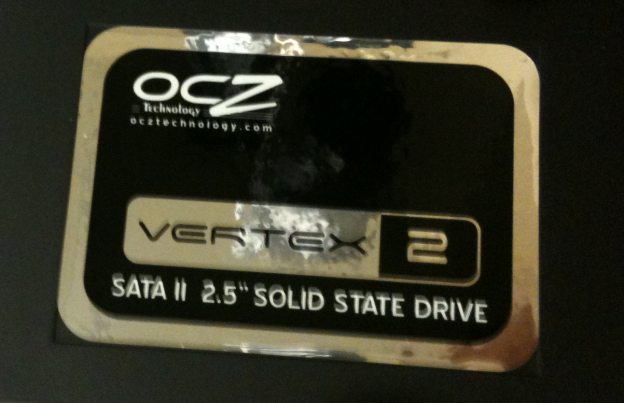
For many long years, we have used hard disk drives as the primary storage medium, whilst solid state drives have been trying to catch up with their capacities and low prices. For the first time solid state drives are actually beginning to be appealing to the average user as prices tumble down and capacities keep on increasing. I have been constantly bombarded with emails saying how you can get one today for as little as £34 and a 480GB SATA II for as little as £150. This is why I have decided to post about this.
The benefits of solid state storage drives have increased as they drop in price and become more readily available. The price has gone down for SSDs and up for hard drives since I got my first one in November 2010 (in my LifeBook T4410 and still runs blazingly fast). I would say I was quite an early adopter of solid state, so when I bought my drive it cost me £200 for a 120GB drive which was a huge gamble considering it had a 500GB hard disk in it. Nowadays the price per gigabyte for solid state storage has gone as low as 60 cents (about 40p) according to one source. This is an incredible breakthrough and very important step for SSDs as the average price per gigabyte for a hard drive was previously as low as 10p before the floods that pretty much doomed the hard drive market the week before I ordered a new 2TB hard disk.
My first concern with SSDs at first was the reliability issues. When an SSD comes to the end of it's life, it can still function as a read only drive. Data can still be read from the disk (if you are using it to store data) but it cannot be written (operating systems need read/write access to the disk and cannot be one or the other, so it will probably not be able to load the operating system). I had originally presumed that this is what happens when the cells lose their functionality, but some articles had shown me otherwise. I now decided that as I have 4 solid state machines (2 for my desktop (the first had a fault in the first 5 months), MacBook Pro and Fujitsu Lifebook T4410 convertible tablet) that I needed to check up on this and find out if what I originally thought was true or not. Indeed I was actually correct about what I had though - once a solid state drive reaches the end of it's life, the cells become read only. You can still recover data from them. To me this was very good news, and single handedly this defeats the hard drive here as when a hard drive randomly decides to die, all the data goes with it.
The major benefit of SSDs that I am always enforcing into people's decisions when their hard drive fails and needs replaced is that of speed. Hard disks can only achieve a maximum/peak speed of around 125MB/s (1000Mbps) at 7,200 revelations per minute. Even with SATA III (better known as SATA6 because it operates at 6Gb/s) they can only achieve a maximum of 300MB/s so they cannot actually saturate SATA current maximum speed which is where the solid state can show its true colours. Most SSDs are rated at around 300MB/s to 500MB/s as a sustained read speed which put into context is 8 x 500 = 4000Mbps or 4Gbps, 2Gbps short of the SATA III peak speed. So SSDs are catching up on the maximum speed of SATA III. Less waiting. More doing. My first ever test with two drives was applied on my 7,200 RPM 500GB 2.5" drive which I used back in July 2010 in my Fujitsu LifeBook T4410 and the OCZ Vertex 2 120GB 2.5" drive that replaced it in November 2010. For the test I cleared everything off the 500GB and moved it to my desktop, formatted the drive and reinstalled Windows x64 on to it. I then formatted the OCZ Vertex 2 and installed Windows 7 x64 on it. On both occasions the PC was plugged in. I started the Fujitsu up with each drive recording the following durations for start up: with the 500GB HDD at 7,200 RPM it took 54 seconds to start up and with the 120GB SSD it took 34 seconds to start up. After tweaking the system a bit, I managed to break the 30 second barrier and get it starting up quicker than ever.
I am actually considering adding a new array of 2x 480GB SSDs (SATA III) to my RAID array of 2x 2TB hard disks (SATA II) as they have dropped so far in price, but offer much better performance with probably better reliability - although I do want to replace this soon with a Thunderbolt enclosure, so the disks may have to wait. My general conclusion is that solid state drives now offer more benefits than hard disk drives do, and although they are still more expensive than hard disks, they show their true colours when you want speed.



There are no comments on this page.
Comments powered by BalfComment